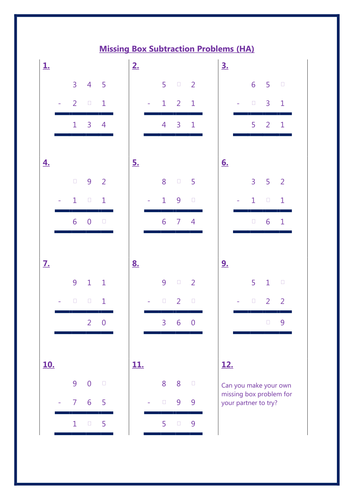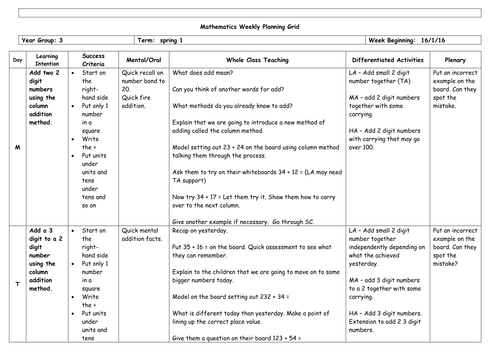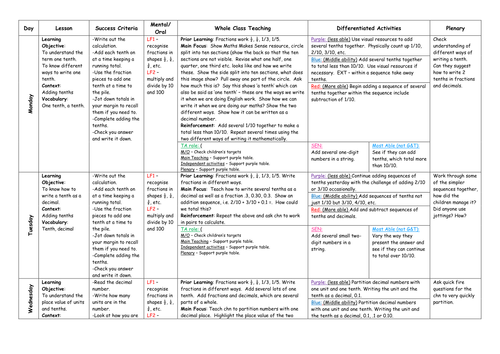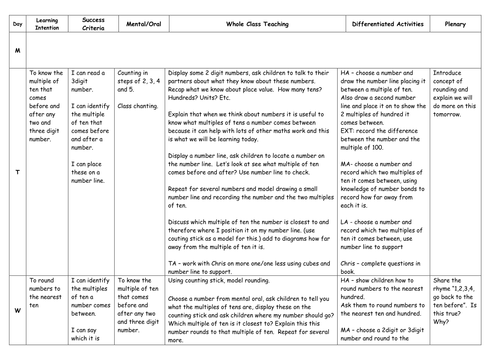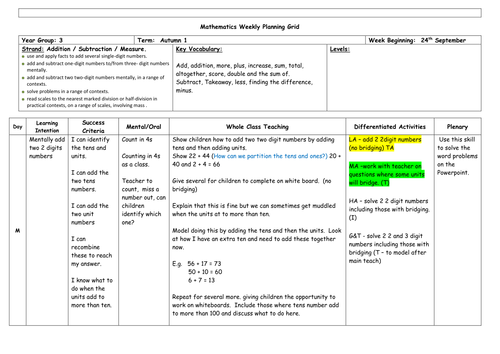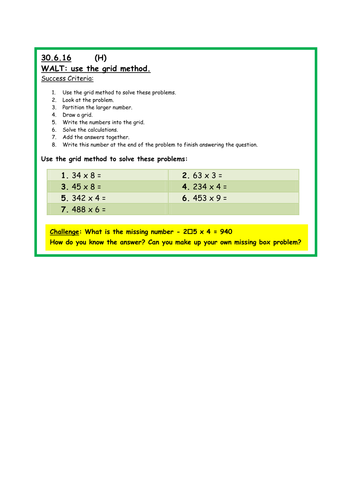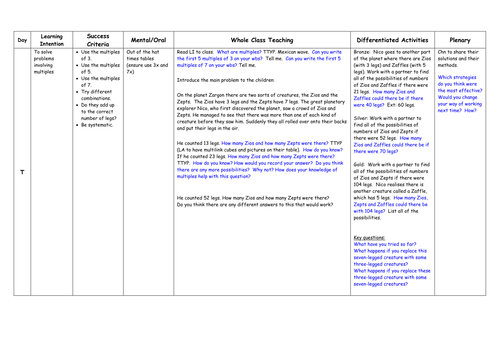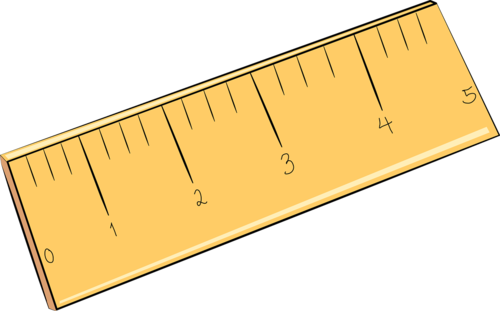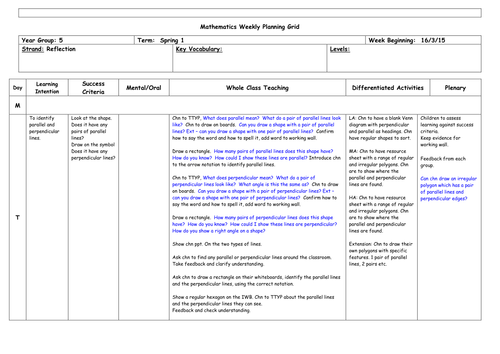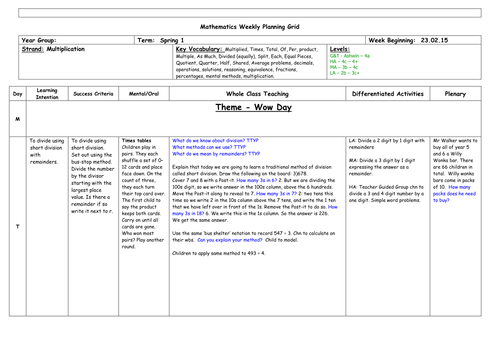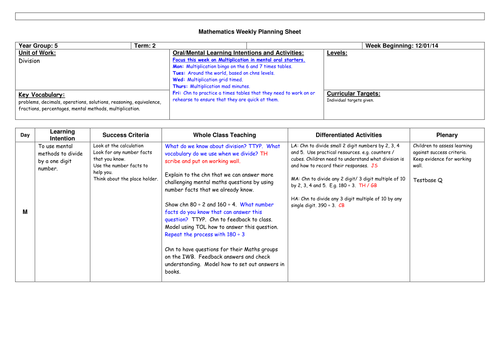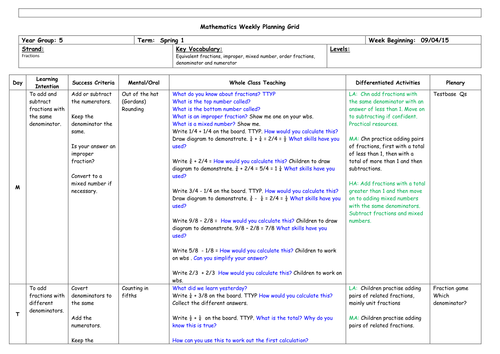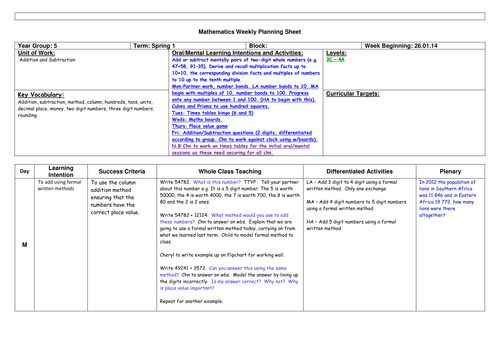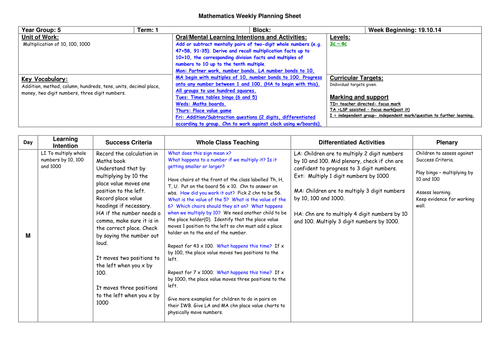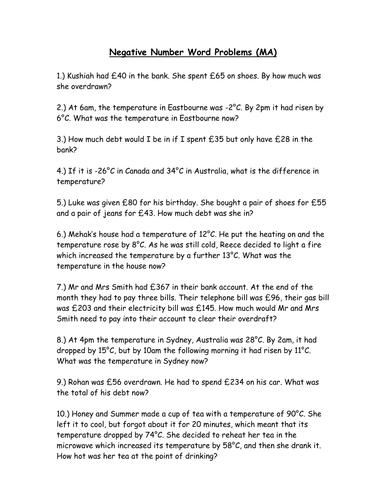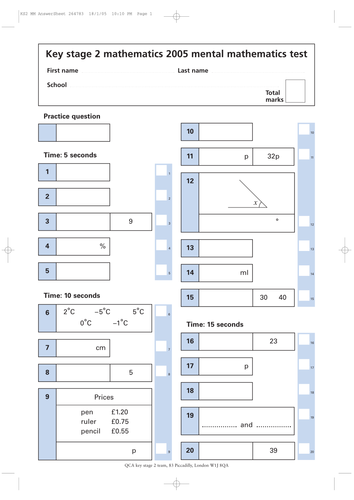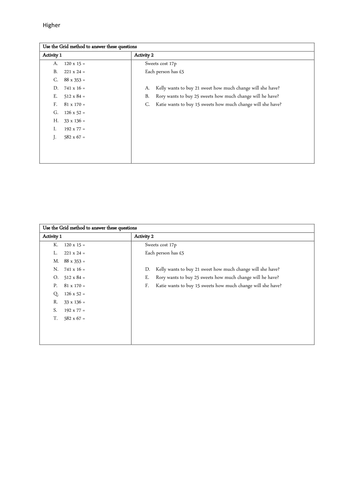
130Uploads
188k+Views
263k+Downloads
Mathematics

Missing box column subtraction problems - Year 3 /4 L KS2 Differentiated Maths
UPDATED
Missing box column subtraction problems - Answers included!
3 way differentiation
Aimed at Year 3 / 4
LA - 2 digits by 2 digits moving on to 3 digits by 2 digits. (no exchanging).
MA - 3 digits by 2 digits moving on to 3 digits by 3 digits. (some exchanging).
HA - 3 digits by 3 digits (with exchanging).
The resource is fully editable and adaptable.
Check out my other KS2 planning and resources!
Bundle

Year 3 - 6 weeks maths planning including some resources.
Year 3 - 6 weeks maths planning including some resources.
Also included in Easter code breaking problem and missing box addition and subtraction problems
All resources fully editable.
See individual resources for more details .
Check out the other items in my shop!

Maths - Column addition and subtraction planning including resources differentiated KS2
Column addition and subtraction planning including resources
3 way differentiation on all resources.
All resources there for each day.
5 day maths plan
Aimed at year 3 lower KS2
WALTS / LI / LO
Add two 2 digit numbers using the column addition method.
Add a 3 digit to a 2 digit number using the column addition method.
Subtract a 2 digit number from a 2 digit number the column subtraction method.
Subtract a 2 digit number from a 3 digit number the column subtraction method.
Solve addition and subtraction problems
Clear and editable planning and resources.

Year 3 - Maths planning on tenths (decimals) differentiated
Learning Objectives / WALTS:
To understand the term one tenth.
To know different ways to write one tenth.
To know how to write a tenth as a decimal.
To understand the place value of units and tenths.
5 days differentiated planning.
Year 3 - Clear and editable.
Vocabulary.
Tenth, decimal place, place value, partition.
Learning Objective:
To be able to round decimal numbers.
Context:
Number lines
Vocabulary:
Round, decimal, tenth, unit.
Learning Intention:
To solve problems.
Context:
Fractions and decimals.
Vocabulary:
Round, decimal, tenth, unit, partition, place value, decimal place.

Year 3 maths 4 day plan - Rounding and finding 10 more ten less.
WALT / LI / LO:
To know the multiple of ten that comes before and after any two and three digit number.
To round numbers to the nearest ten
To find ten more or ten less than any 2 or 3 digit number.
To find ten more or ten less than any 2 or 3 digit number.
Clear differentiated planning including mental oral, success criteria and plenary.
Easy to edit.

Mental addition and subtraction - Year 3 Maths Planning 4 days (week)
Mental addition and subtraction - Year 3 Maths Planning 4 days (week) Differentiated
WALT / LI / LO:
Mon - Mentally add two 2 digits numbers
Tues - Mentally subtract a 1 digit for a 2 digit.
Tues - HA: Mentally subtract 2 digit from a 2 digit
Wed - Mentally subtract 2 digit from a 2 digit
Thurs - Solve addition and subtraction problems
Clear plan including a mental oral starter and success criteria.

Multiplication using the grid method activity worksheet including a challenge (Maths KS2)
Multiplication using the grid method activity worksheet including a challenge (Maths KS2)
Differentiated 3 ways includes a challenge.
Using in an observation lesson only thing to improve was to get to the challenge quicker.
KS2 Year 3

Ofsted observation KS2 maths lesson - solving problems involving multiples
Ofsted observation year 5 maths lesson - solving problems involving multiples.
I used this in an observation for ofsted. Differentiated resources and starter. Planning and display included.
It uses problem solving to apply what they know about multiples. Could be used in any KS2 class if amended.
L.O: To solve problems involving multiples
Bundle

Year 5 - Maths Planning Bundle 8 Weeks some resources included.
Year 5 - Maths Planning Bundle 8 Weeks some resources included. Based on the 2014 curriculum.

Year 5 - Reflection, parallel and perpendicular lines, Coordinate Planning Differentiated 4 Days
Year 5 - Reflection, parallel and perpendicular lines, Coordinate Planning Differentiated 4 Days
2014 Curriculum
To identify parallel and perpendicular lines.
To use coordinates on a grid.
To reflect shapes on a mirror line.
To use co-ordinates when reflecting shapes

Year 5 Division Planning 3 Days
Year 5 Division Planning 3 Days
Please see my other resources for previous division planning.
2014 National Curriculum.
Learning Intentions and Objectives:
To divide using short division with remainders.
To divide expressing the remainder as a fraction
To solve division problems

Year 5 - Division Planning Differentiated 5 Days
Year 5 - Division Planning Differentiated 5 Days
2014 National Curriculum.
Learning Intentions and Objectives:
To solve division problems with remainders
To use mental methods to divide by a one digit number.
To use a written method to solve division calculations.
To solve problems using division
To round after division

Year 5 Fractions Planning
Year 5 Planning Fractions
Leaning Objectives / Intentions:
To add and subtract fractions with the same denominator.
To add fractions with different denominators.
To subtract fractions with different denominators.
To find fractions of quantities
To solve problems involving fractions

Adding and Subtracting using formal written methods planning and resources - Year 5
Adding and Subtracting using formal written methods planning and resources - Year 5
5 days planning and resources for day 3 and 4 only.
Learning Intentions /Objectives
To add using formal written methods
To subtract using formal written methods
To add decimals mentally
To subtract decimals mentally
To solve multi-step problems in a range of contexts.

Mental and written methods to solve multiplication calculations 4 days planning and resources.
Mental and written methods to solve multiplication calculations 4 days planning and resources differentiated.
Pitched at year 5 - Autumn term.
Learning Intentions/ Objectives
To use mental methods for multiplying a two digit number by a one digit number.
To use a written method to solve multiplication calculations.
To use a written method to solve multiplication calculations.
To solve multiplication word problems.

Find fractions of amounts - maze - Problem Solving - Year 3 - differentiated
Find fractions of amounts - maze - Problem Solving - Year 3 - differentiated
3 Differentiated worksheets finding the fractions of amounts 1/2 (LA) 1/2 and 1/4 (MA) and 1/2, 1/4 and 1/8 HA.

Multiplication 10, 100, 1000 weekly planning and resources for Year 5
Maths Multiplication of 10, 100, 1000 weekly planning and resources (for Mon- Thurs) 3 way differentiated.

Year 5 Negative numbers planning and resources
Year 5 KS2 Negative numbers planning and resources
Weekly plan
Some resources attached and some from books.

Mental Maths SATS paper 2005 Lesson
The lesson contains all that is needed to review the 2005 mental maths paper and to go through with pupils about how to answer the questions and giving different differentiated examples. Link to the audio file.

Year 6 Multiplication Differentiated Worksheets
Year 6 Multiplication Differentiated Worksheets and Lesson plan using the grid method. Including a lesson starter and answers to the 3 worksheets.

